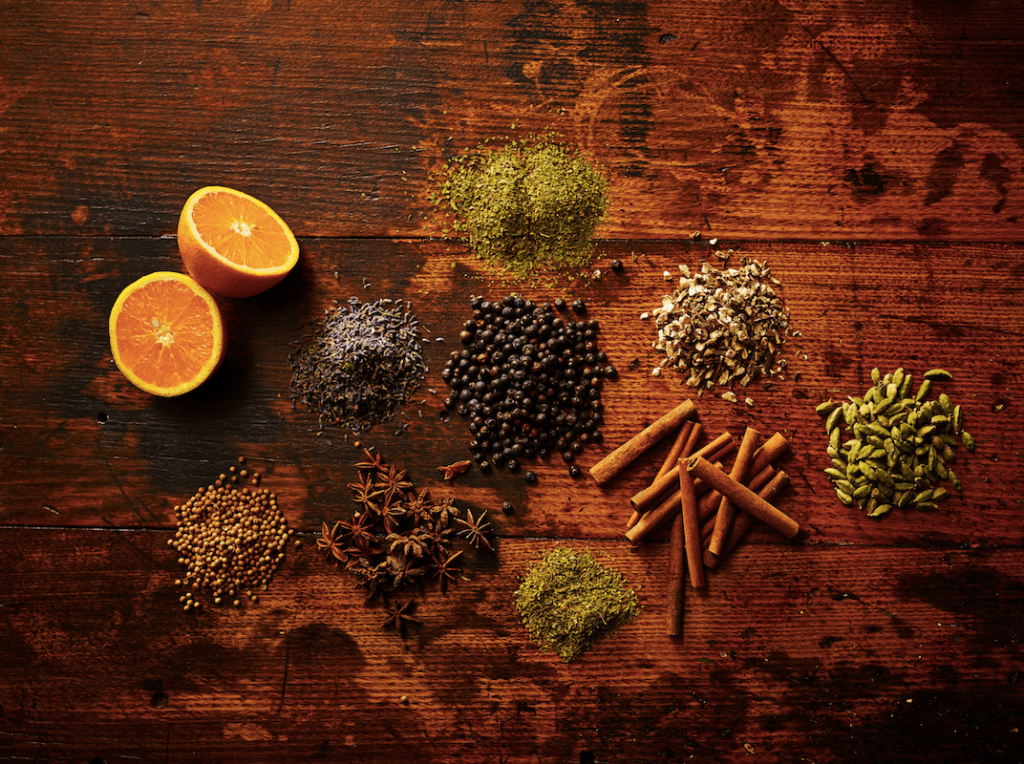By: Alyssa L. Ochs
There are many different things to think about when operating a distillery. However, one often-overlooked detail is the distillery’s boiler and its quality, condition and features. There are various kinds of boilers available to craft distilleries today, which is why it’s a good idea to learn more about them and know what questions to ask before either buying your first boiler or upgrading your current one.
The Importance of Distillery Boilers
Boilers are used in distilleries to heat the kettle, for sanitation and sterilization, for pasteurized heating, to maintain precise temperatures and to meet production demands efficiently. Boilers are essential in the distilling process because making spirits requires hot water to be at specific temperatures, and a boiler helps the distiller control temperatures. The ability to control this heat improves the quality of the spirit and ensures the distiller’s safety.
Boilers create high-quality steam that impacts a spirit’s taste and are commonly used to sanitize and sterilize distilling equipment. In some instances, boilers can even help control a distillery’s air temperature where tastings and tours take place.
Boiler Types
Modern water tube boilers start producing steam faster than older models, while older fire tube boilers take longer to heat up and can be out of commission for longer during servicing. Distilleries use low-pressure and high-pressure steam boilers or steam injection boilers that are typically affordable to buy and install, supply steam with no filters needed and provide hot water for various distillery needs. Low-pressure steam boilers are efficient and low-cost to operate, less noisy than steam injection boilers and pass inspections more easily.
Dave Baughman, President of Allied Boiler & Supply, told Beverage Master Magazine that low-pressure boilers produce and supply steam below 15 PSI. These boilers come in various designs, including fire-tube, water-tube, tubeless and cast iron sectionals.
“Some of these boilers are great at handling low-pressure steam heating loads, such as a church, school or apartment building,” Baughman said. “But they aren’t as conducive to a production type of application.”
He also said that the type of boiler used in a distillery should be dictated by the distillery equipment and the associated steam load requirements.
“A small craft distillery may be able to utilize a boiler that produces steam up to 15 PSI, which is ASME Section IV construction,” Baughman said. “As the pounds of steam per hour load demand increases with larger distillery equipment, then a power boiler of ASME Section I construction–which produces steam greater than 15 PSI–may be required in order to hold a steady steam pressure at the equipment. Holding a steady steam pressure at the distillery equipment is extremely important as steam pressure relates to temperature. The distillery equipment needs to have steady pressure in order to perform properly. If the steam pressure fluctuates, then temperature fluctuates accordingly, which affects the performance of the stills and other distillery equipment.”
Allied Boiler manufactures fire-tube and tubeless boilers, both Section I and Section IV construction, from six to 2,000 horsepower. Baughman said that each installation and its particular steam load determines the type of construction the boiler needs to be.
Boiler Features
Many modern boilers are narrow enough to fit through a standard doorway and easily install into a distillery building. Boiler companies make over a dozen different sizes ranging from five to 150 HP. Options for craft beverage producers of varying sizes are generally between five and 120 barrels per batch. Commercial distilling boilers are usually over 50 gallons. For example, a distillery can get a 150-gallon steam injection boiler that produces 337 pounds of sanitary steam per hour. For regulatory purposes, boiler and pressure vessels should have a stamp of approval from the American Society of Mechanical Engineers.
Questions to Ask Before Buying a Boiler
One crucial question to ask about is the start-up time for a new boiler. It is usually unnecessary for a boiler to run 24 hours a day and waste energy, so quick-start-up boilers are designed to be turned on and start producing steam within a few minutes. Also, ask a boiler salesperson about energy efficiency because you’ll want to pay attention to fuel costs and not run up utility bills unnecessarily.
Confirm the exact boiler measurements to ensure that it fits in your distillery space and also fits well alongside other equipment and any tasting or tour areas. Ask about the maintenance process, because if routine maintenance shuts down the distillery for a long time or if repairs are complex, this could hurt future business. Newer models of boilers typically have lower emissions for a reduced environmental impact. However, it still doesn’t hurt to ask about any emissions or harmful substances that may come from the boiler. It’s also good to know if extra parts will be readily available if they’re needed later.
“The boiler itself is a powerful piece of equipment,” said Baughman. “If operating personnel are not properly trained, or if the boiler and support equipment are not properly maintained and serviced, then the boiler can be deadly.”
He recommends asking the following questions before purchasing a first boiler or upgrading a current one:
• Do you offer boiler training?
• Do you perform start-up commissioning, boil-out, combustion tuning and jobsite operator training with the purchase?
• What are some installation references from distilleries that have had your boiler for at least three years?
• Do you have 24/7 personnel available for service?
• What makes your boiler, support equipment and company different from others?
• Why should we purchase this design boiler versus a different one?
When to Upgrade a Current Boiler
For existing distilleries that have been in operation for a while, the time may come when you need to consider replacing or upgrading your current boiler. Common reasons to upgrade are a boiler that’s too noisy in public areas, high utility bills resulting from energy inefficiency and inconsistent steam pressure. It may also be time to replace your boiler if it can’t produce steam quickly and on-demand.
Maintenance Considerations
No one likes to think about a brand-new boiler breaking down, but maintenance should always be part of the decision-making process when making a significant distillery investment. Fortunately, many modern boilers require minimal maintenance and need to be blown down at the end of the day to flush out the sediment that settles at the bottom. The blowing down process should be quick and help prevent damage to drains and plumbing lines.
Routine maintenance should also involve checking chemistry levels to ensure the pH is ideal for steel. There are mandatory state inspections to adhere to as well. For ease of operation, consider installing an alarm system to tell if the feed tank is running low. Some boiler systems can be easily maintained by distillery staff; however, older models may require an expert maintenance specialist to come onsite for repairs.
Boiler Placement
Concerning placement, it’s vital to keep boilers away from other equipment and isolated with a vapor barrier. Place the boiler at least six feet from still parts that are 18 inches or less from the floor. Also, place the boiler at a minimum of two feet from still parts above that 18-inch mark.
Most boiler experts recommend placing boilers as close to the still and fermenters as possible to minimize the distance that cold water and steam have to travel to and from the equipment. This placement helps control heating and cooling loss, as well as piping costs. Boilers are often located in a separate room from other distilling equipment, but not every distillery separates their boiler in this way.
Another consideration is the floor strength in the distillery. Older buildings may require custom installation because of inadequate floor strength, building materials or availability of utilities.
Baughman said that the best placement of a boiler is in a separate boiler room because the boiler is a pressure vessel that is hot and typically has a water level sight glass, gaskets and other parts that can leak or blow.
“By definition, wherever the boiler is placed becomes a boiler room,” he said. “Because of this, the boiler room has certain code requirements that must be met. From an environmental standpoint, a boiler likes to operate where there is not a lot of moisture. A separate boiler room affords this environment typically, whereas, if the boiler is out in the distillery, it may be subject to moisture from the wash down of the floors and cleaning of the equipment. So, from a safety and operational standpoint, a separate boiler room is the best.”
Boiler Accessories
New boilers come with accessories that need to be added to the budget and stocked for repairs and maintenance. For example, CRT and VRT return tanks are used to collect condensate from the system and recycle it back to the boiler. Copper coils are used to make potable hot water for sterilization and keg wash-down. There’s also the blow-down separator used to flush out sediment and keep everything working well.
Choosing the Right Boiler
for Your Distillery
Like grains, extracted juices and sugars, boiler steam is an essential ingredient in many spirits. The right boiler will meet your steam demands at production time without waiting hours for it to provide steam. It should be able to handle multiple processes simultaneously for greater efficiency and be capable of adjusting the steam supply on demand to save fuel costs and reduce energy waste. Other things to think about when choosing a boiler is proper roof venting for boiler operation, and whether to hire a licensed steam boiler technician to install the boiler and service it in the future.
No matter what you’re looking for in a boiler, ask a lot of questions. There is a lot more that goes into this piece of distillery equipment than you might think. And, as Baughman said, the only bad question is the one that doesn’t get asked.








